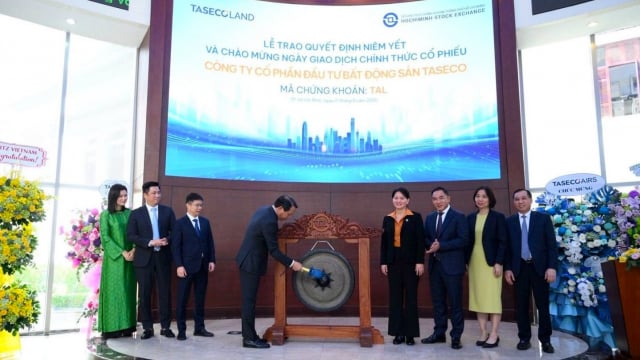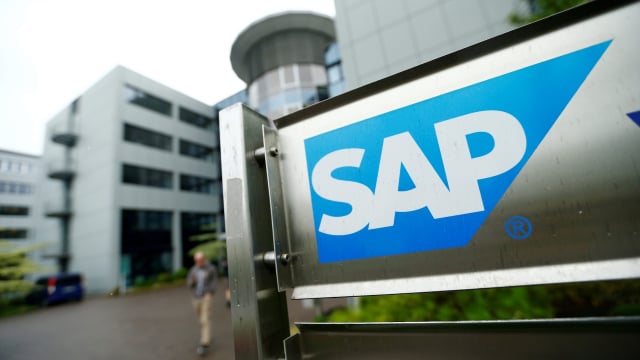Business
How companies are transitioning in circular economy
Despite the growing attention to circular economy in the public, the shift to business models seems to progress slowly.
For a long time, our economy has been ‘linear’, meaning that raw materials are used to make a product, and after its use, any waste as packaging is thrown away. Through the time, the traditional model has shown many downsides, for example pollution.
In that context, the circular economy model is born and encouraged, to reuse materials, creating sustainable benefits for both the economy, society and the environment.
Nowadays, more and more businesses apply circular model in their production, driven by both internal and external motivations. The new model helps companies achieve cost optimization, and has environmentally friendly brand. In addition, customers and regulators increasingly request information on circular performance.
It is seen that more large corporations, companies join together with each others to create alliances to promote circular and sustainable models, namely Ellen MacArthur Foundation, World Business Council for Sustainable Development (WBCSD).
In Vietnam, there is Packaging Recycling Organization Vietnam (PRO Vietnam) founded in 2019, including leading FDI and Vietnamese companies, and toward a common responsibility that is making Vietnam green, clean, and beautiful by promoting a circular economic model.
Three key issues for economic rebound after lengthy lockdown
The ViewPoint survey “Circular Economy. How are companies transitioning” showed that most companies experience cost savings (57.2 per cent) as a main benefit, which is not surprising given the focus on existing processes and products.
Companies focus more on process and product innovation, such as resource recovery (30.3 per cent) or product life extension (39.6 per cent).
In addition, fewer have moved into more advanced business models innovations such as product as a service (17.6 per cent) and sharing platforms (12.5 per cent).
Brendan Edgerton, circular economy director WBCSD, stated that while the private sector’s commitment to circularity is clear, external communications for their efforts are inconsistent in scope and barometer used.
As investors, customers and regulators increasingly request information on circular performance, those companies equipped to measure, monitor and improve their circularity stand to capture the most value and showcase their true leadership.
The fact that only 24.7 per cent determine initial level (baseline) of circularity before implementing initiatives, while 26.7 per cent set specific goals and targets, and 19.8 per cent have identified performance indicators poses a significant barrier to progress.
Identifying the successful initiatives to scale and communicating transparently on performance becomes infinitely harder without proper metrics. This is not aided by a total of 65.6 per cent using their own circular measurement framework rather benchmarked frameworks designed by established organisations like the WBCSD and Ellen McArthur Foundation.
According to Luca Crisciotti, CEO in supply chain and product assurance in DNV, results seem to indicate that performance communication and digital solution application is limited.
That means there is a huge potential to take advantage of existing solutions, building necessary stakeholder and consumer engagement, and trust by combining verified metrics with blockchain-enabled track and trace applications.
In addition, digital platform to connect directly with consumers, then encouraging them to make better choices for sustainable development, has not yet been popular. It can be highly effective solution cause PRO Vietnam emphasized that consumers are an vital key to build a circular economy model.
Inefficient plastics recycling costs Vietnam up to $3 billion each year
Michelin leads the smart mobility revolution with data and AI
Michelin is undergoing a strong transformation by applying AI and smart analytic, helping lead the smart, safe, and sustainable mobility revolution in the Industry 4.0 era.
LG Innotek secures $200 million IFC loan following revenue drop
LG Innotek Vietnam Hai Phong secured a $200 million IFC loan as revenue slows, aiming to expand camera module production while meeting sustainability targets.
Leading with empathy in Vietnam’s billion-dollar investment flows
For Koen Soenens, Sales and Marketing Director at DEEP C, empathy is a compass that guides major deals, the way a leader builds a team, and the ambition to create a sustainable industrial zone that carries a Vietnamese identity.
Taseco Land’s new logo marks a new growth trajectory
Taseco Land has shifted its listing to HOSE and introduced a new upward-pointing arrow logo - a visual statement of its strategy to raise capital, expand its land bank, and strengthen its standing in Vietnam’s real estate sector
SAP positions Vietnam as key R&D hub with €150 million investment
Located in the heart of Ho Chi Minh City, SAP Labs Vietnam is the second SAP Labs Network hub in Southeast Asia, following Singapore and is one of 20 countries that have SAP Labs globally.
Solar & Storage Live Vietnam returns, leading sustainability and innovation in energy sector
Solar & Storage Live Vietnam event has been running since 2017 and the 2025 edition will be the biggest yet.











































